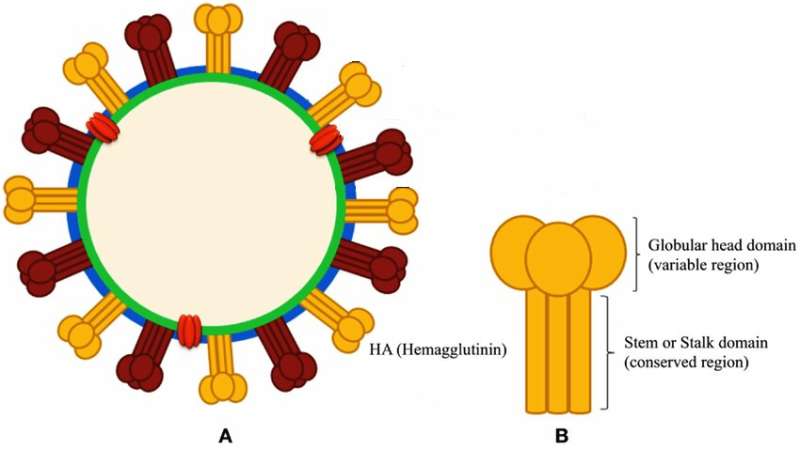Flu no more: The search for a universal vaccine

Chances are, you've had the flu.
Body aches, chills, congestion, and cough—for millions across the globe, these symptoms are all too familiar.
For some, though, the flu leads to serious complications. Last year, as many as 647,000 Americans were hospitalized due to flu-related illness, with an additional 61,000 deaths.
Countless hours of lost productivity also accompany the illness. Including hospitalization costs, estimates for the flu's total economic burden range from $10 billion to $25 billion each year.
Flu prevention efforts have yielded mixed results. For many viruses, vaccines provide protection that lasts a lifetime, building up a network of antibodies primed to neutralize future infections. Influenza viruses, however, mutate quickly, rendering vaccines from years past ineffective. As a result, new vaccines are constantly in development.
Every year, researchers predict which flu viruses are likely to dominate the upcoming flu season. Based on these predictions, new vaccines target these specific strains. Consequentially, the effectiveness of these vaccines vary with the prediction. When a vaccine is a good match for the dominant flu strain, it can lower rates of infection by 40-50 percent. When it isn't, its preventative power is far lower; in 2014, for example, the yearly influenza vaccine was only 19 percent effective.
Peter Palese, Ph. D, might have a better solution. Working at the Icahn School of Medicine, Palese and his team are developing a vaccine that takes a new approach to flu prevention.
Just before classes ended last month, Palese spoke at the Duke Influenza Symposium, a showcase of Duke's current research on influenza. The symposium is part of Duke's larger push to improve the efficacy of flu vaccination.
Palese's vaccines work by redirecting the immune response to the influenza virus. Traditional vaccines create antibodies that target hemagglutinins, proteins found on the outermost part of influenza viruses. Hemagglutinins are divided into two regions: a head domain and a stalk domain (Fig. 1).
In a traditional vaccination, the head domain is immunodominant—that is, the antibodies produced by vaccines preferentially target and neutralize the head domains. However, the head domain is highly prone to mutation and varies between different strains of influenza. As a result, antibodies for one strain of the virus provide no protection against other strains.
The new vaccines pioneered by Palese and his team instead target the stalk domain, a part of hemagglutinin that mutates far slower than the head domain. The stalk is also conserved across different subtypes of the influenza virus. As a result, these vaccines should theoretically provide long-lasting protection against most strains of influenza.
Testing in ferret, mice, and guinea pigs have produced promising results. And early human trials suggest that this new kind of vaccination grants broad immunity against influenza. But long-term results remain unclear—and more trials are underway. "We would love to say it works," Palese says. "But give us 10 years."
In the meantime, the seasonal flu vaccine is our best option."The recommendation to vaccinate everyone is the right policy," Palese tells us.



















